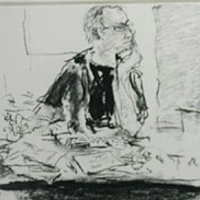
Carla Freccero
Carla Freccero is Distinguished Professor in Literature and History of Consciousness and Affiliated Faculty in Feminist Studies at UCSC.
less
Related Authors
Galen Strawson
The University of Texas at Austin
Zoe Ververopoulou
Aristotle University of Thessaloniki
Alejandra B Osorio
Wellesley College
Andrea Peto
Central European University
Stephen Muecke
University of Notre Dame (Australia)
Cristiana Facchini
Università di Bologna
David Seamon
Kansas State University
Romy Golan
Graduate Center of the City University of New York
Shaun Gallagher
University of Memphis
Christopher Witmore
Texas Tech University
InterestsView All (32)










Uploads
Papers by Carla Freccero